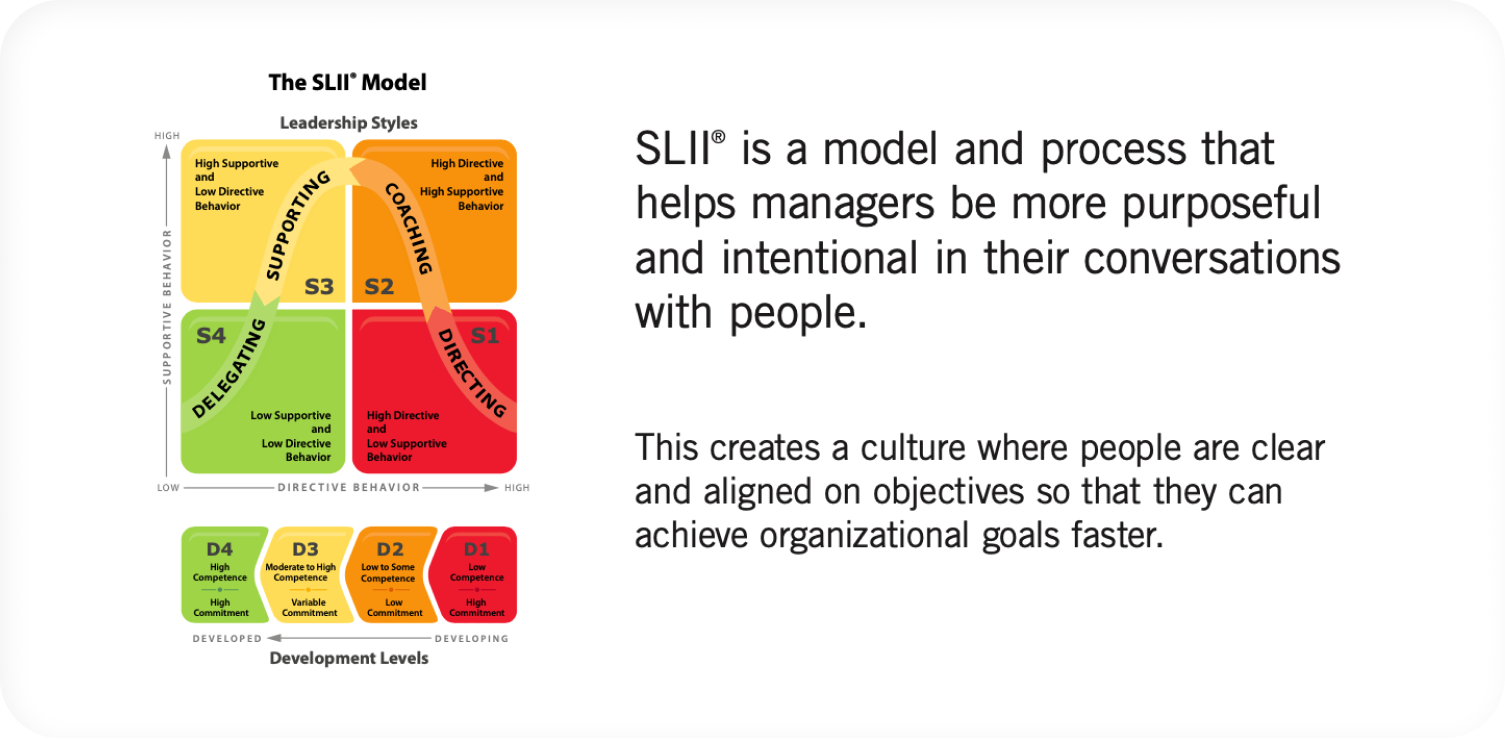Why it’s crucial for your leaders to take a situational approach to management
Why it’s crucial for your leaders to take a situational approach to management
Done well, performance management is a partnership
But research indicates there are significant gaps between what employees expect from their leaders and what they actually experience at work.
Left unaddressed, these gaps represent a drain on overall organizational vitality through lowered employee intentions to stay, endorse, and apply discretionary effort as needed.

With SLII®, managers and direct reports learn how to speak a common language that builds trust and a sense of partnership.
Leaders learn how to give people the right amount of direction and support for each task or goal they face at the exact time they need it.
Leaders also learn how to adjust their style to fit the situation. Too much direction is just as bad as too little direction
- Providing too much direction on tasks where a person is already competent feels like micromanagement
- Providing too little direction when questions or problems come up feels like abandonment or being set up to fail
We know from asking hundreds of thousands of people that the best leaders flexibly match each person’s needs for direction and support with the right leadership style for that person, in that moment, on a specific goal or task.
In SLII®, managers learn three foundational skills that teach them how to partner with their people.
Most important, managers learn that leadership is not something you do TO people; it’s something you do WITH people.
The three foundational skills managers learn are
- Goal Setting. Getting aligned on what needs to be done and when.
- Diagnosing. Having a conversation with an individual to understand what their competence and commitment are on a specific goal or task.
- Matching. Learning how to use a variety of leadership styles comfortably to provide individuals with what they need when they need it.

1
Goal Setting
SLII® teaches managers how to set goals with their people that are specific and trackable—and then goes one step further to ensure goals are also relevant, attainable, and motivating. This way, everyone is on the same page, with a clear understanding of how their work contributes to the bigger picture.
2
Diagnosing
SLII® teaches managers how to diagnose what each person needs in terms of direction and support on a specific goal or task. Managers learn how to provide clear direction on a task that is new, and how to take a more hands-off approach when the person is already skilled at the task.
3
Matching
SLII® teaches managers how to use the leadership style that gives the needed amount of direction and support to each person at every stage of a task or goal. This helps people progress through stages of learning more quickly so that they can master their tasks and achieve their goals.
It's about giving people the exact leadership style they need — when they need it.
Great managers aren’t born—they’re trained. As the world’s most taught leadership model, SLII® is used by top companies around the world to train over 150,000 new managers each year. Help your managers to be the leaders their people need. Contact us today to get started.
